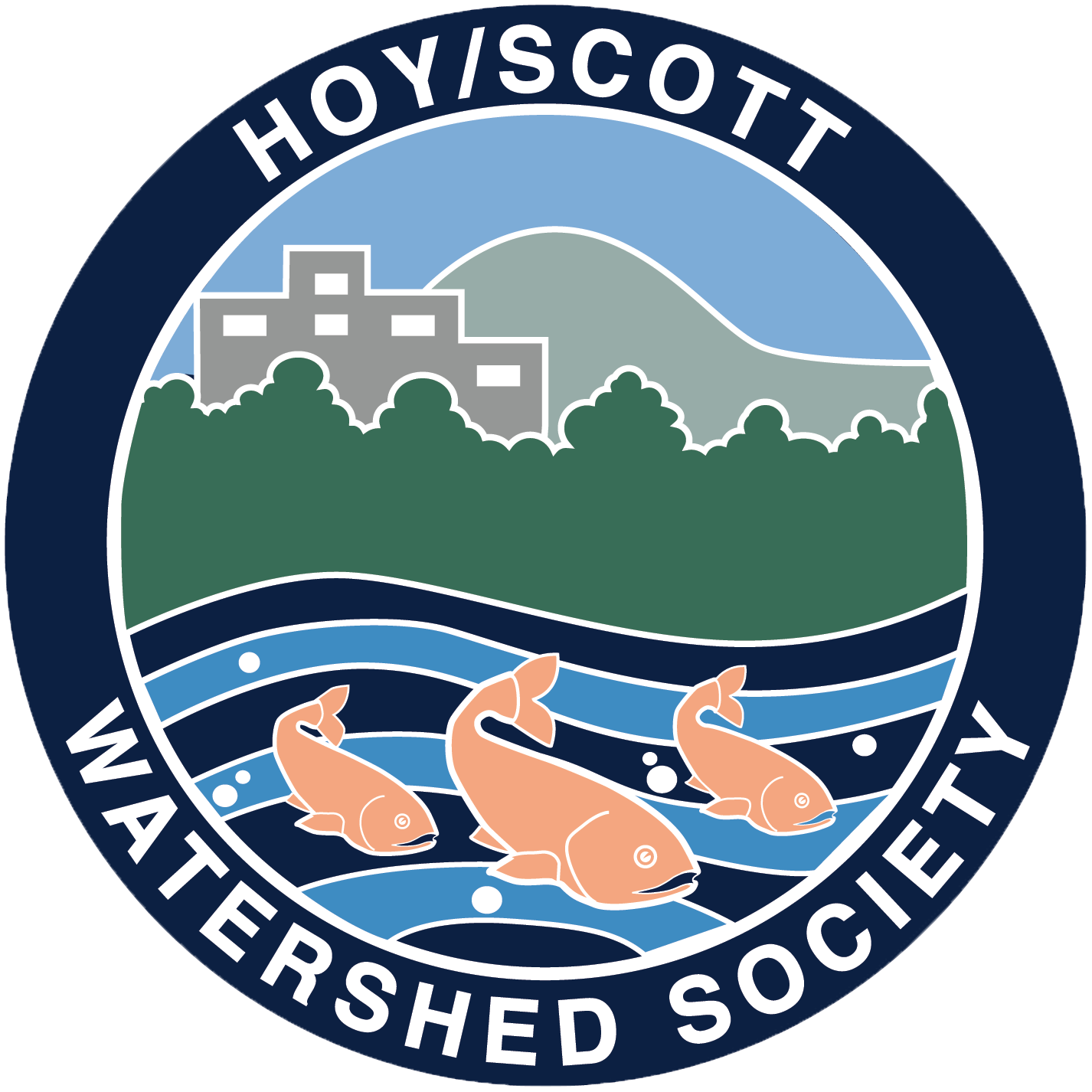Coho fry approximately 5 month old.
Since our last update, a lot has changed, not only with our eggs hatching, alevin emerging and now maturing to swim-up fry but the global pandemic we face. As a result of COVID-19, Hoy-Scott Watershed Society has made the decision to cancel all Saturday work sessions, all in-person meetings, and hatchery tours or open houses until further notice including our annual Salmon Leave Home event.
Behind the scenes, our volunteers continue to provide the daily aquaculture care including feeding, filter and equipment/tank cleaning supporting the 2018/2019 broodstock held in our rearing pond and the 2019/2020 swim-up fry that have been transferred from the incubator to our Capilano trough.
Three of our four Coho Salmon trays in the incubator have matured to fry with only a faint reminder on their bellies where a yolk sack once was (from the Alevin lifecycle stage). These three trays have been transferred to our Capilano trough and all at different times as they each reach their maturity as swim-up fry. As of today, we have almost 8000 fry held in our Capilano trough (on the east side of the hatchery building), and the final incubator tray is just days away from joining the rest as they mature. Our survival rate has been over 99% with this year's collection and we will have almost 14,000 coho salmon.
Fry are ponded and move from the incubation room to the Capilano trough on the east side of the hatchery.
When first ponded, the fry undergo a vital change – it takes some time (between 20-40 mins or more), but they eventually swim-up to the surface to take in air. Over a period, they will take several surface gulps of air that fill up their swim bladder allowing them to hold a position in the water (i.e. float). As the fry begin to stabilize and adjust to this new environment, we begin to feed them with food for their first time; previously as alevin, they fed off their yolk sacks.
Our fry along with wild salmon have developed dark bars on their sides by now, called parr marks. In a natural environment, these bars help them to camouflage with the gravel and blend in with their surroundings to hide from predators like birds. Coho fry within Hoy creek and other estuaries will be visible if you are to patiently wait and watch long enough in eddies and still pools.
As the weather improves, we find ourselves getting out to complete yard work, clean the exterior of the house, clean the car, among many other activities. With each of these activities, we should stop and think about where the fertilizer run-off goes, the same about the paint that fell off the fence or house during washing, the soap that removed the grime from the car and even the sand with some murky water that left the driveway bright grey once again. All of these are pollutants and we must each do our part to ensure these don’t end up in our watershed or elsewhere in the environment.
Also when taking a walk through the watershed on sunny days, remember how nice it is to be in the cool shade. Wild salmon in the creek including our hatchery fish rely on shade created from large boulders, overhanging bushes, tree stumps or fallen logs to keep the water cool. Wooded debris in the creek not only provides shade but food sources and also acts as a natural aerator to keep up the oxygen in the water for the fish to survive. Please remember to leave the branches, logs and creek banks the way they are found to ensure the creek remains stable, healthy and productive with life.
If you have questions or are interested in volunteering with the society, please contact us at hoyscottwatershed@gmail.com. Be sure to check out our Facebook page for more photos of our work and of nature along the watershed.




